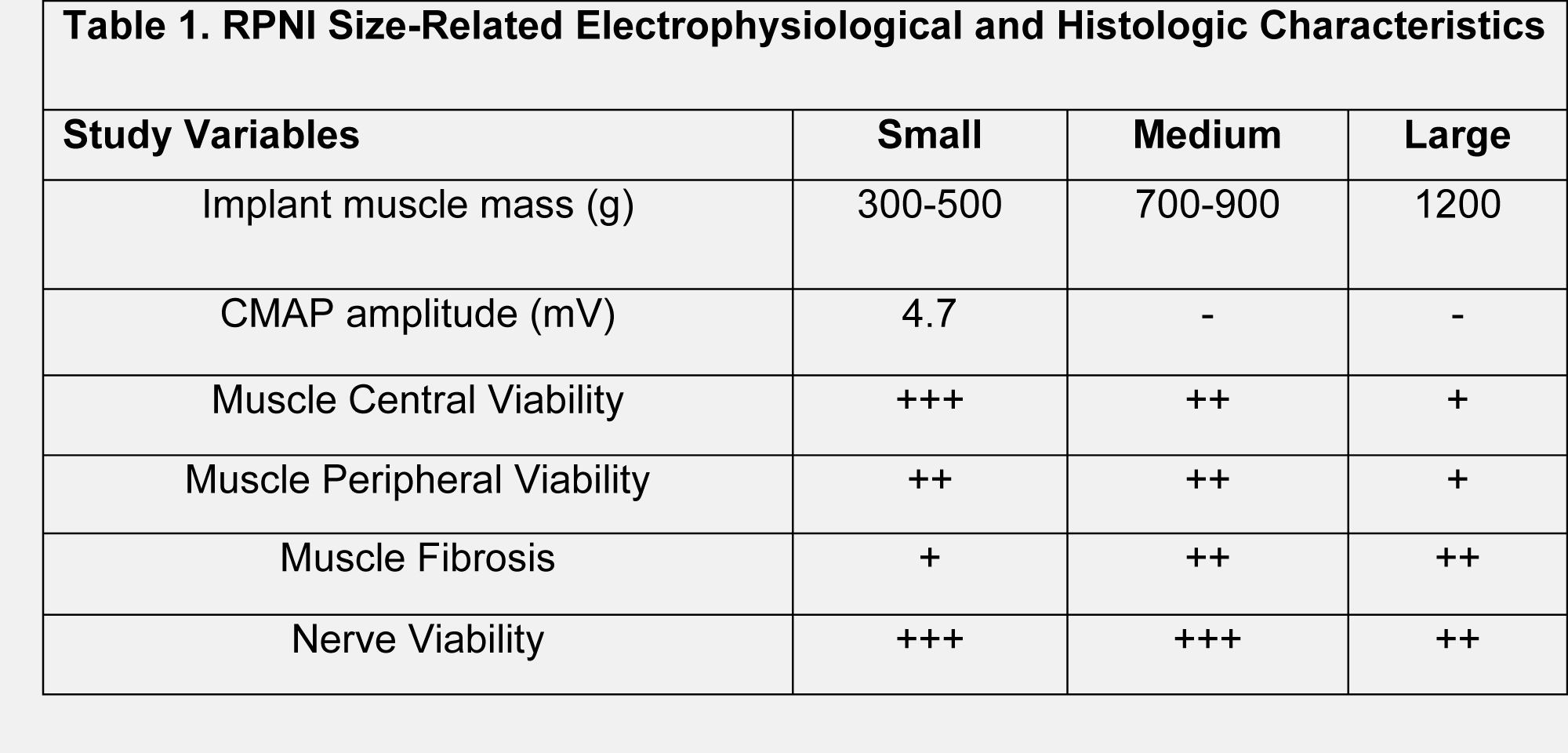Effect of Muscle Graft Mass on Survival and Function of Regenerative Peripheral Nerve Interfaces
Suvethavarshini Ketheeswaran1, John D Luck1, Jaimie T1 Shores
1Johns Hopkins University School of Medicine, Department of Plastic and Reconstructive Surgery, Baltimore, Maryland, USA
Background: Regenerative peripheral nerve interfaces (RPNIs) are free muscle grafts constructed around a transected nerve developed for prosthetic control and neuroma prevention. Graft viability is maintained by diffusion of nutrients from the surrounding wound bed. We sought to characterize the effect of graft size on muscle viability and function in a large animal model.Objective: The objective of this study is to evaluate the effect of muscle graft mass on the early survival of RPNIs.
Methods: Twelve swine were assigned to 3 experimental groups (n=4 per group) of varying muscle masses. Muscle grafts of the following masses were evaluated: 1) small (SM) (300-500 grams) 2) medium (MD) (700-900 grams), 3) large (LG) (2400 grams). Each group underwent surgical RPNI implantation on the end of a transected ulnar nerve, using free muscle grafts obtained from the ipsilateral pectoralis major muscle. Compound Muscle Action Potentials (CMAPs) were evaluated in-vivo. We explanted RPNIs and stored them in 10% formalin at postoperative day (POD) 14. Half of each groupís samples were stained with hematoxylin and eosin (H&E) utilizing tissue cross-sections from one-half of the muscle lengths. Two blinded reviewers assessed muscle and nerve viability.
Results: Electrophysiological evaluation at POD 14 revealed generation of CMAPs in the SM RPNI group, with a mean amplitude of 4.7 mV. No CMAPs were detected in RPNI samples >300g. Histologic analysis using H&E revealed central muscle viability (+++) in the SM group, moderate viability (++) in the MD group and minimal viability (+) in the LG group. Peripheral viability was moderate (++) in the MD and SM groups and minimal (+) in the LG group. There was minimal (+) fibrosis in the SM group and moderate (++) fibrosis in the MD and LG groups.
Conclusion: Electrophysiological evaluation of varying muscle graft masses revealed a mass threshold of 300g, beyond which no action potential was recorded. Histological analysis demonstrated fibrosis and deceased viability of the innermost layers of RPNIs with increasing mass. These results indicate muscle graft mass has an inverse effect on RPNI viability and function. This is an important consideration for surgeons when selecting the size of free muscle grafts for neuroma prevention and prosthetic control.
Back to 2022 Abstracts

